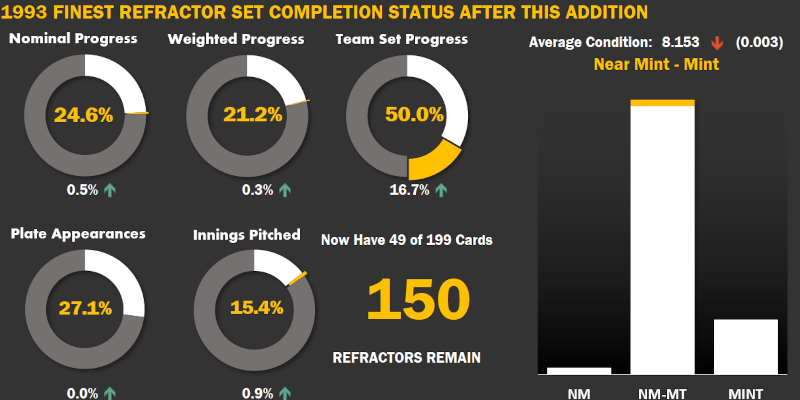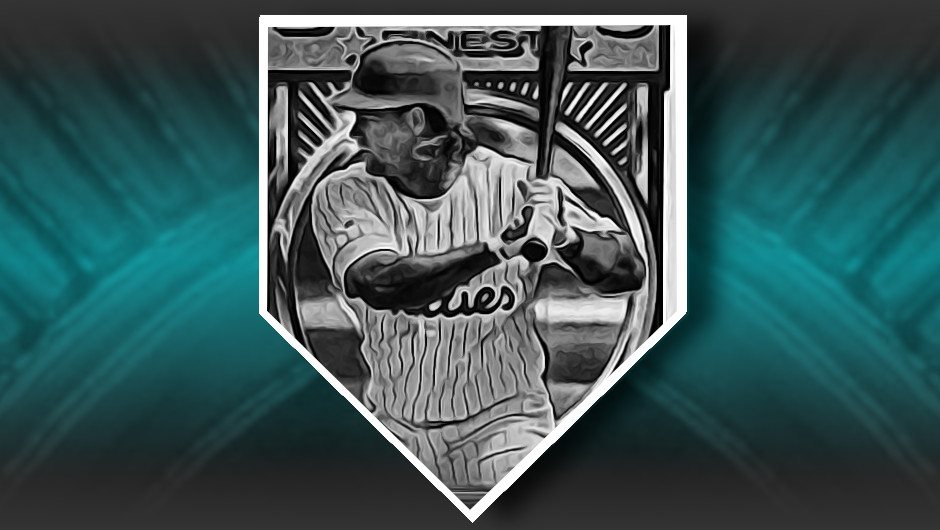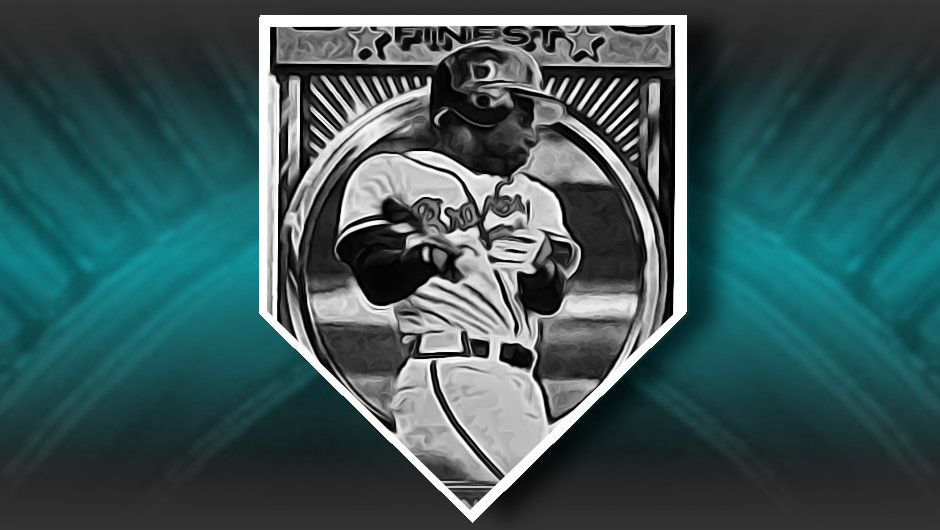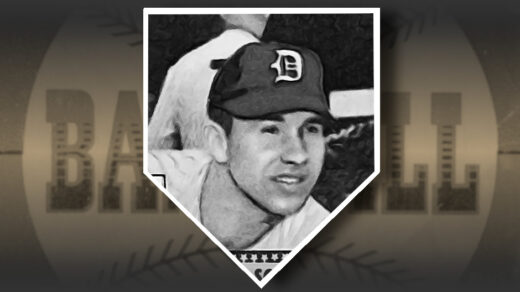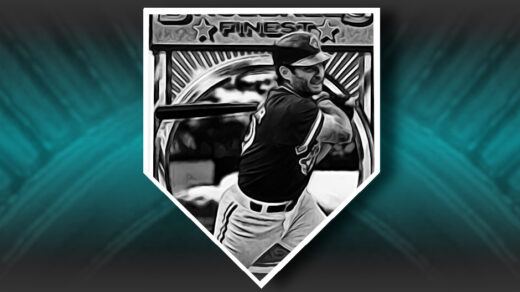Imagine coming to the plate in a high pressure situation with the pitcher on the mound being the size of NFL linebacker Bryan Urlacher. Now imagine they yank this guy and hand the ball to an even bigger guy, specifically one who is 2 inches taller and 11 lbs. heavier. Add to your misfortunes the fact that this guy is in the midst of setting the all-time saves record. You’re facing Lee Smith.
Smith spent the tail end of his career as a closer, but he had pretty much always been a reliever. He started only 6 games in his career, two fewer than the number of teams he played with. Closers are typically brought in to finish off the final inning of a close game, but firemen are brought in to stamp out emergency pitching situations that threaten to get out of hand. They usually enter with runners on base and a real threat present at the plate. Smith spent much of his career in the latter role, largely with the Chicago Cubs and St. Louis Cardinals. When Smith retired he was the all-time MLB saves leader and would hold the mark for another decade.
Firemen present an evaluation challenge. Traditional metrics like counting earned runs assign the runs of inherited baserunners to the previous pitcher, making relievers seem better than they actually are. Likewise, the fact that they inherit a jam from their predecessors makes a straight head-to-head comparison a bit more fraught.
One method of addressing this challenge is the use of RE24 as a performance metric. This approach looks at the state of play at the moment a reliever is called out of the bullpen and uses the average number of runs produced in similar situations to set a baseline expectation of what will happen. An average reliever will allow roughly the same number of runs as would be projected over an extended period. A terrible one consistently allows a greater number of runs and a great one consistently reduced the number of runs. Essentially, positive RE24 values indicate an effective fireman. Smith recorded positive RE24 values in all but his final (21 inning) season and cumulatively prevented more than 170 runs than would be expected.
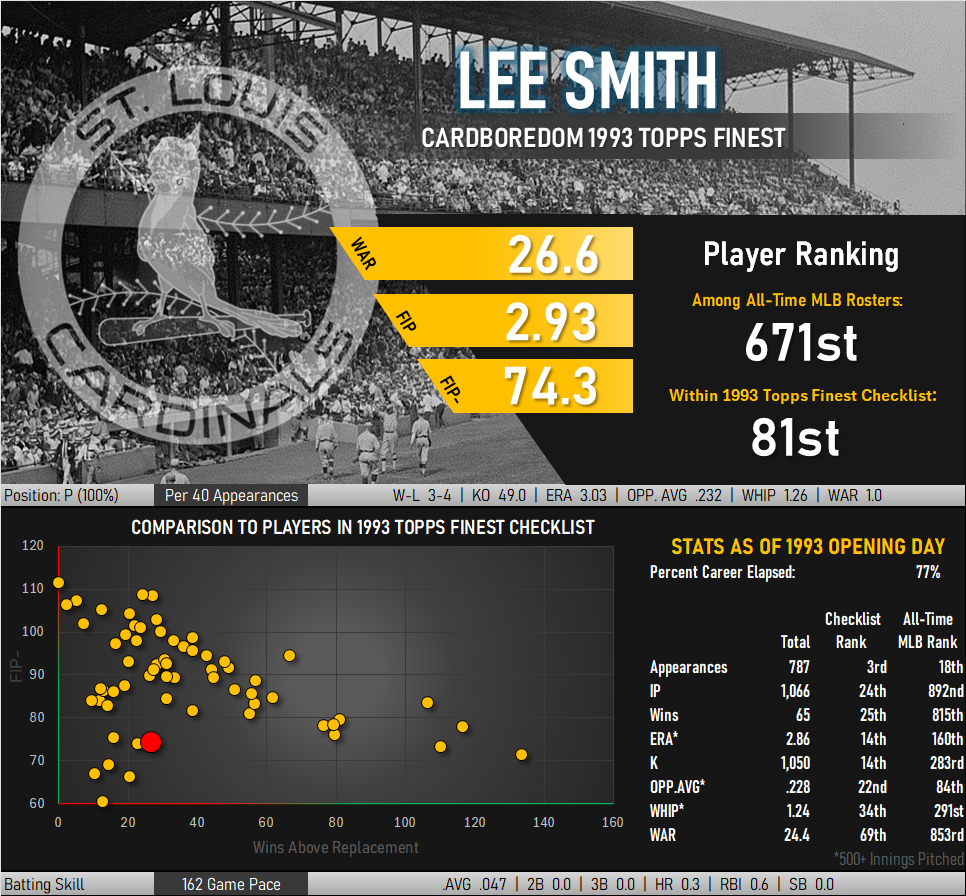
Fun fact: Smith only got three hits as a batter, but one of them was a homerun off of Hall of Famer Phil Niekro.
I Took a Gamble to Get This Refractor
Collecting refractors can be difficult when the card cannot be physically inspected before the purchase. Third party grading services are very helpful, and raw cards can be purchased with confidence from collectors known to have a good eye for the cards. There are times, however, when one comes across an advertised refractor without these assurances.
I picked up my Lee Smith card in just such a transaction. It was listed on eBay at a reasonable buy-it-now price but had no takers for several months. The seller was based at a foreign military post and the picture looked indistinguishable from a base card. Many collectors less familiar with these cards will confuse the base and refractor versions and I suppose this listing was generating its fair share of skepticism. I researched the seller’s past feedback, finding several base and refractor cards successfully sold. This was viewed favorably, as it was unlikely for a confused seller to confuse only some base cards but not others. Buyers also reported receiving correctly identified cards, so I made the assumption that this seller knew what he was doing. When the card arrived in the mail it was exactly as described.
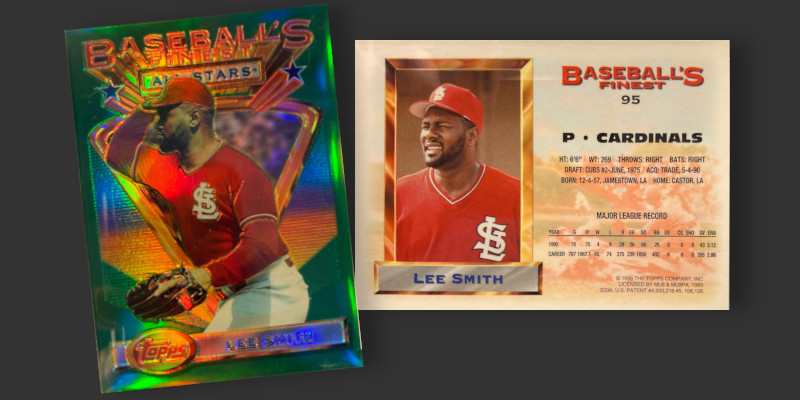
Leeeeeeeee Smith????!!!!!
There’s another gamble that I came across that is worth mentioning. There is a YouTube video from Stryker Breaks in which a collector opens an entire box of 1993 Finest packs searching for a refractor. You can tell he’s enjoying the hunt and finally comes across a Lee Smith refractor in the pack he opens at the 7:31 timestamp. The disappointment in his voice and look on his face when he laments “Leeeeeeee Smith?” is so pronounced it’s hilarious.
This pretty much sums up Smith’s place in the hobby. He’s a Hall of Famer and a very good pitcher, but his cards have never generated tremendous excitement. His career kind of snuck up on everyone and his cards never really caught the hobby interest of more high-profile relievers like Dennis Eckersley.
